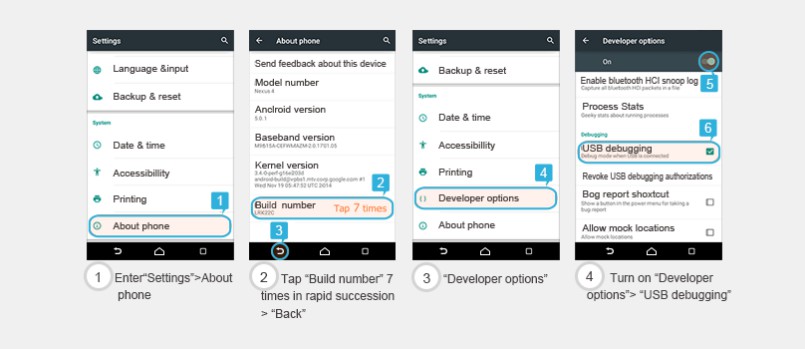- Get link
- X
- Other Apps
What is rooting?
- Rooting is the process of allowing users of the Android mobile operating system to attain privileged control (known as root access) over various Android subsystems.
- Rooting gives the ability (or permission) to alter or replace system applications and settings, run specialized applications that require administrator-level permissions or perform other operations that are otherwise inaccessible to a normal Android user.
- Rooting an Android phone lets the owner add, edit or delete system files, which in turn lets them perform various tweaks and use apps that require root access.
Advantages:
- Support for theming, allowing everything to be visually changed from the color of the battery icon to the boot animation that appears while the device is booting, and more.
- Full control of the kernel, which, for example, allows overclocking and underclocking the CPU and GPU.
- Full application control, including the ability to fully backup, restore, or batch-edit applications, or to remove bloatware that comes pre-installed on some phones.
- Custom automated system-level processes through the use of third-party applications.
- Ability to install software that allows additional levels of control on a rooted device or management of root access.
Disadvantages:
- Compared with unrooted Android device, the rooted one faces a common threat from mis - operation and sometimes you may turn your Android device into a brick. Avoid this risk: Just download apps from reliable place like Google play, and, do not delete the files if the files are suggested not to delete by rooting apps.
- The Android device manufacturers will not cover the damage after you rooting your device. For some brand, we can unroot the device after rooting, so, the manufactures don’t know if you have rooted your Android device or not. But to make matters worse, Android device manufactures also go to great lengths to know if your device has been rooted!
- Sometimes you root Android phone to get latest OS but after rooting, you may find that the automatic updates to the firmware stopped. Updates fail to install due to software modifications that occurred while the distribution has been rooted.
Rooting an android device:
- Back your data:
- Enable USB Debugging on Your Android Device:
- Go to the Settings → About phone ① . Then scroll down and tap several times on build number ②. Then go back ③ .
- Now the developer options ④ is enabled.
- Turn on developer options ⑤ and search for USB debugging and enable it ⑥.

- Use this Root app:
Kingo ROOT (PC & APK Versions): Official Link
- Kingo ROOT is a free Android root software. It has both PC and APK versions for you to root your Android device. It offers you the easiest and fastest Android rooting experience for almost all devices and it owns the highest success rate.
- This tool is very easy-to-use. You can root your Android device with only one click after opening the software.
Pros:
- Safe, free, and high efficiency.
- Its operation interface is very simple.
- It supports almost all Android devices.
- It has both PC and APK versions.
- You can perform an Android root with only one click.
- You can remove root with only one click.
Cons:
- It has fewer functions compared with some other Android root tools.
Still Confused??- CLICK HERE
- Get link
- X
- Other Apps
Comments
Post a Comment